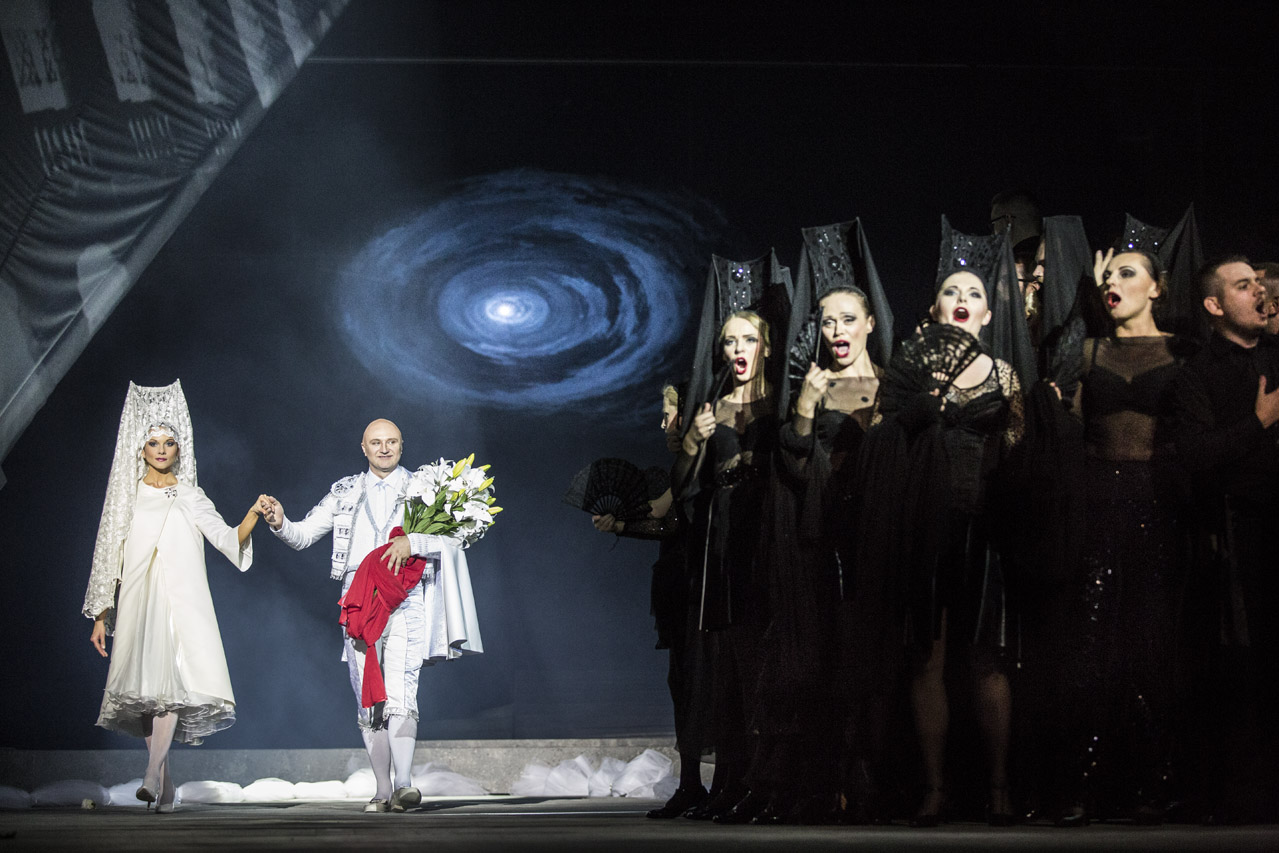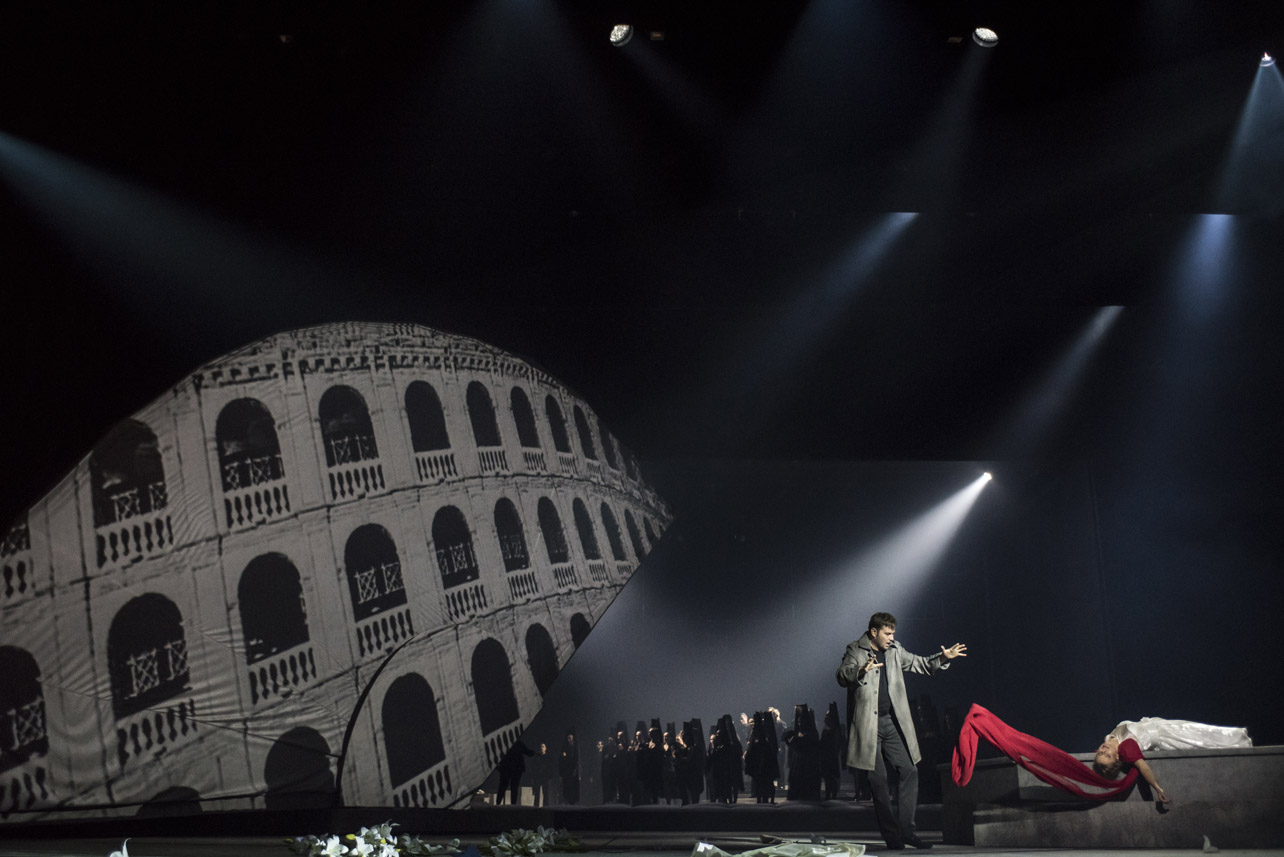Carmen is a liberated woman: she values her independence and is ready to follow her feelings, irrespective of the cost. She bravely faces the challenges of fate, which—like in a Greek tragedy—eventually brings her death. Although this may be hard to believe, the opera’s premiere was a complete and utter flop. Contemporary audiences could not stomach a work that contradicted the socially approved norms. With time, though, what turned the play’s opening night into a failure 140 years ago, became the source of its lasting popularity. Georges Bizet successfully transformed the opera scene of his time. His “Carmen” was a story of passion: a testimony of the human struggle with the timeless experience of love. Bizet introduced lifelike, contemporary people onto the stage and turned the title protagonist into a lasting, cultural symbol of female strength. Yet it is the music, full of Spanish exoticism and gypsy sparkle, that remains the greatest strength of “Carmen.”
SYNOPSIS
The libretto was based on a novella by Prosper Mérimée, long-time friend of the emancipated writer George Sand. This is why the opera’s main protagonist was so unpalatable for the contemporary audience: her feminism was deemed “unworthy of a woman.” The main plot line follows the love story between a gypsy woman and a Basque—representatives of two nations that were discriminated against in Spain. The opera takes place around 1820 in Seville. The young Carmen, a worker in the cigar factory, meets officer Don José, who is besotted with the beautiful woman. However, with time, the gypsy shifts her fascination to bullfighter Escamillo, rejecting José’s feelings. Wanting to remain true to her ideals, the main of which was freedom, Carmen parts with Don José. The desperate man then kills the girl.
PRODUCTION
The set design remains faithful to the principles set out by Georges Bizet, at the same time coming closer to contemporary everyday reality. Consequently, instead of traditionally dressed officers of the 19th-century French army, we see contemporary soldiers at the square in front of the Seville factory. The figure of Carmen is also made to appear more modern, drawing on the stars of the silver screen. The show includes images that are strongly rooted in cinema—Carmen using a cigarette holder quite like Audrey Hepburn in “Breakfast at Tiffany’s,” taking off her gloves like Rita Hayworth in “Gilda” and dying like the American dancer Isadora Duncan.
World premiere: 3 III 1875, Opéra-Comique, Paris
Premiere: 25 IX 2015















































